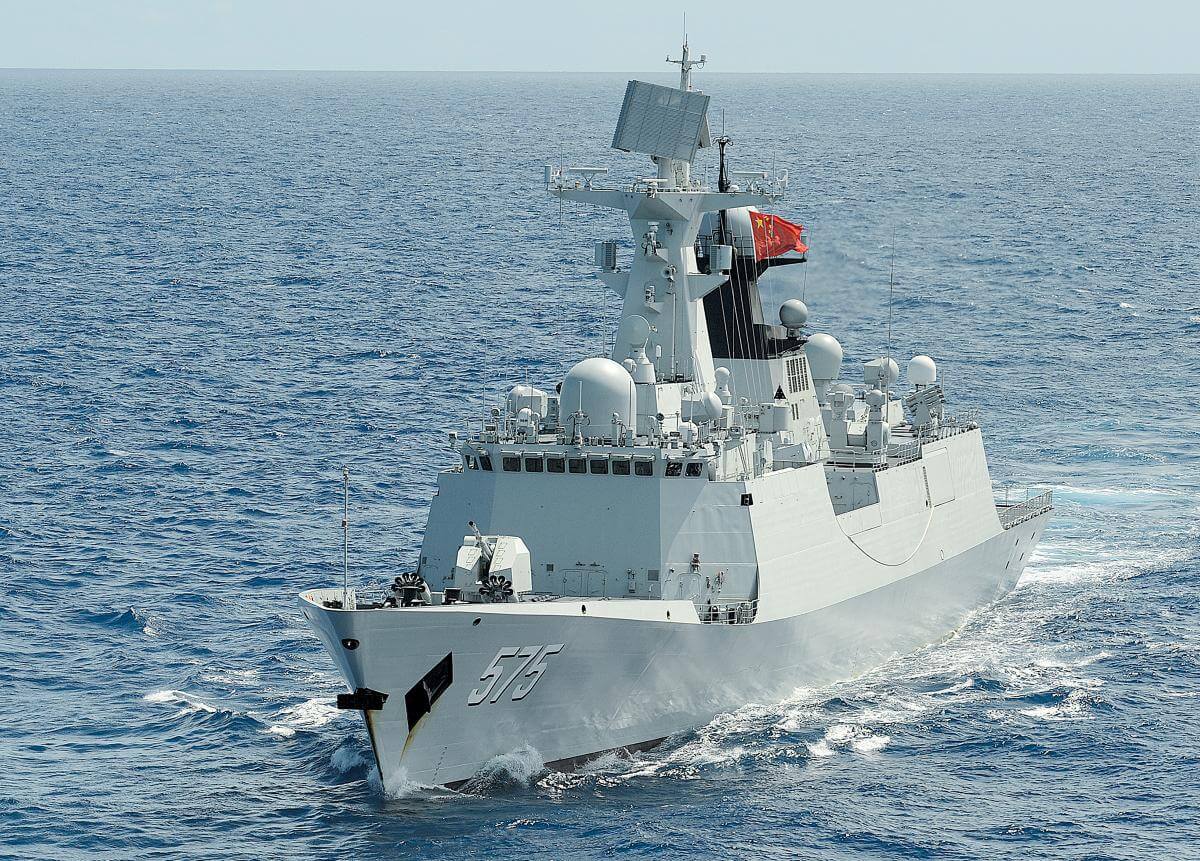
The Pacific Ocean, which was historically perceived as a region of lesser significance, has now emerged as a focal point in global geopolitics. This area, comprising numerous small island nations, is garnering increased attention because of its strategic location and resources. Furthermore, it plays a crucial role in establishing global norms and maritime security. This shift in focus is attributed to the intensifying rivalry between major powers, particularly the United States and China.
Island Chains in the Pacific and the Three Island Chain

The Pacific Ocean encompasses numerous islands, which are categorised into three principal regions: Melanesia, Micronesia, and Polynesia. These islands have contemporary significance and exhibit diverse geological features. The formation of the Pacific Islands is attributed to geological processes that are primarily driven by plate tectonics. There are two predominant types of islands: continental and oceanic. Continental islands are extensions of a continent, typically larger in size, and possess fertile soils. Notable examples include New Guinea, New Caledonia, and New Zealand, which are remnants of the ancient supercontinent Gondwana. Oceanic islands are volcanic in origin and have never been part of a continent. They are further classified into two types:
-Volcanic High Islands arise from volcanic activity and are often associated with a hotspot where magma ascends to the surface. The Hawaiian Islands exemplify this, with older islands located in the northwest and younger active islands in the southeast.
-Low Coral Islands and Atolls are composed of coral reefs and develop as volcanic islands subside and erode over time. A coral reef forms around the island, and as the volcano descends, the coral grows vertically, creating a ring of small islands (an atoll) encircling a lagoon. The Marshall Islands and Kiribati are examples of such countries.
The Pacific Islands are situated along crucial sea and air routes connecting Asia, North America, and Australia. Their strategic location renders them significant in geopolitical competition, particularly between the United States and China. China is expanding its influence through infrastructure projects, such as ports and airports; consequently, the United States and its allies are fortifying their relationships with Pacific nations to counterbalance this influence and maintain regional stability.
Low-lying coral islands and atolls are highly susceptible to the impacts of climate change, including rising sea levels and extreme weather events. Rising sea levels threaten to submerge entire nations, leading to population displacement and habitat destruction. Intensified cyclones and droughts further destabilise these islands, positioning them as strong advocates for climate action on the international stage to protect their futures.
Chinese Foreign Minister Wang Yi pledged increased support from the world’s second-largest economy to Pacific Island countries in addressing climate change during a summit in Xiamen, China, according to a ministry readout. May 2025
Island nations possess extensive Exclusive Economic Zones (EEZs), granting them jurisdiction over vast maritime areas rich in resources, including valuable fish stocks and potential seabed minerals. However, their economies often exhibit fragility, relying heavily on sectors such as tourism, fishing, and remittances from overseas citizens. The effective management of these resources presents a significant challenge, frequently involving altercations with foreign nations and multinational corporations (MNCs).
Three Island Chain Strategy
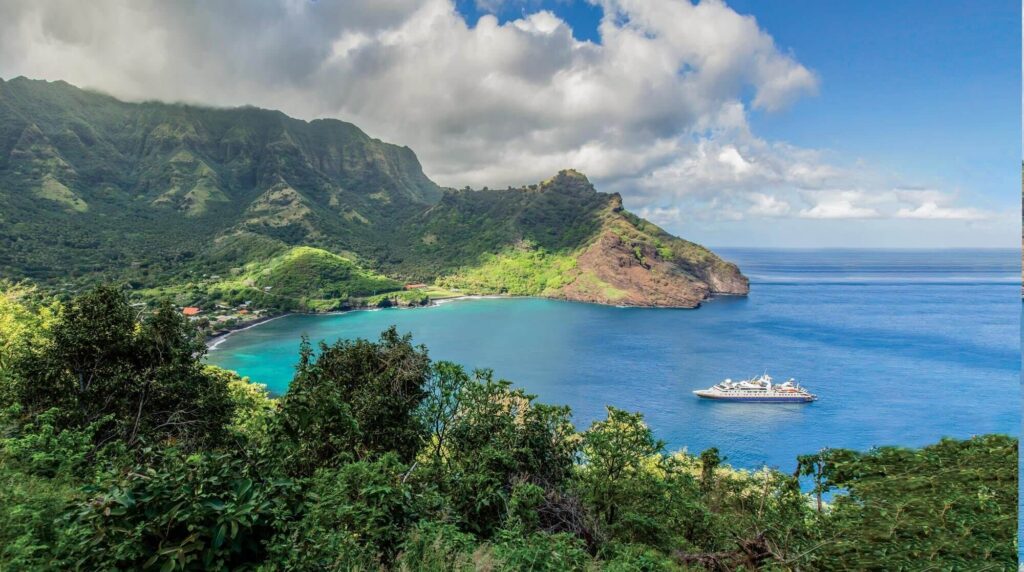
The Three Island Chains strategy is a geopolitical concept formulated by the U.S. foreign policy expert John Foster Dulles in 1951. Developed during the Cold War, its purpose was to curtail the influence of the Soviet Union and China by encircling them with naval bases and allied territories in the Western Pacific.
The First Island Chain is situated closest to Asia, extending from the Kuril Islands through Japan, the Ryukyu Islands, Taiwan, the Philippines, and Borneo. This chain represents the primary arena of competition between the United States and China. For the U.S. and its allies, it serves as a defensive line to exert control and restrict China’s maritime expansion, whereas for China, it constitutes a barrier to be surmounted to gain access to the broader Pacific. The “island chains” concept is integral to China’s military strategy, perceiving them as both barriers and launch points for power projection. China’s strategic initiatives aim to displace U.S. forces from this chain, particularly around Taiwan and the South China Sea.
The Second Island Chain is positioned east of the First Island Chain and encompasses the Bonin Islands, Volcano Islands, Mariana Islands (including Guam), and Palau. The Second Island Chain functions as a critical fallback and “launch point” for the U.S. military, and Guam, a major U.S. military installation, serves as a forward base. This chain is vital for the U.S. to defend its allies within the First Island Chain and maintain a robust presence in the Pacific, even when faced with challenges near China’s coastline. China is endeavouring to augment its influence in this region to counterbalance the U.S.
The Third Island Chain represents the outermost defence line, extending from the Aleutian Islands in Alaska through Hawaii and south to American Samoa and Fiji. The Third Island Chain constitutes the final defence line safeguarding the U.S. mainland. It hosts significant U.S. military bases, particularly in Hawaii, which is the home of U.S. Indo-Pacific Command. Although traditionally perceived as a secure area, China’s expanding naval capabilities and influence in the Pacific Islands have raised concerns regarding the security of this chain.
In response to the Island Chain Strategy, China developed its Anti-Access/Area Denial (A2/AD) strategy, a comprehensive plan designed to deter U.S. involvement in proximity to China during potential conflicts. A2/AD encompasses a range of methods beyond military means to impede an adversary’s movements. China’s activities in regions beyond the First Island Chain, such as Melanesia and the Aleutians, are part of a broader strategy to secure a strategic advantage. Consequently, these areas have become significant in the competition, transforming the rivalry into an expansive “great game” for control over the Pacific’s strategic regions and maritime routes.
This article argues that the island nations must enhance their security capabilities and infrastructure to meet the imminent threat of persistent incursions by China into the Pacific Islands and its strategic objective of dismantling the U.S. Island chain strategy.
China’s Expanding Influence
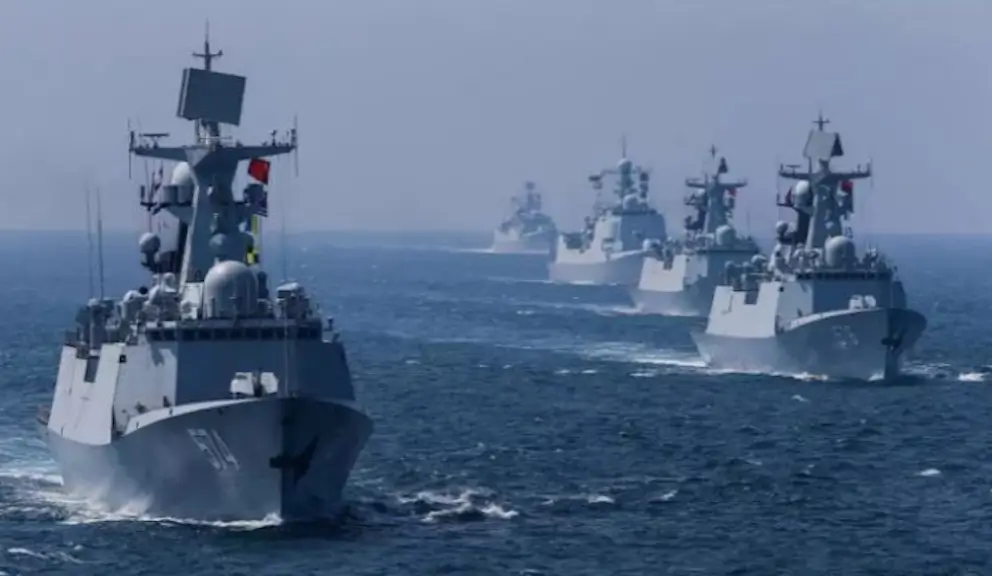
China is augmenting its presence in the Pacific Islands using a multifaceted strategy. This approach encompasses various methods beyond conventional military actions, including economic agreements, diplomatic initiatives, and the utilisation of state-owned enterprises for commercial and military purposes.
China leverages its economic and diplomatic initiatives to exert influence without resorting to the use of force. The Belt and Road Initiative (BRI) is a principal component of this strategy, involving substantial infrastructure projects financed by Chinese loans and grants to developing countries. For numerous Pacific Island countries (PICs), Chinese funding presents a favourable alternative to traditional funding sources, particularly given their perception of neglect by partners such as Australia and the United States.
The concept of “debt-trap diplomacy” describes the potential for China to use loans to gain political leverage over other nations. Some critics contend that China’s approach may exacerbate debt issues and is motivated by its strategic objectives in the Pacific. Conversely, others argue that this term is politically biased and that debt data from the Pacific do not fully substantiate this perspective. Despite the ongoing debate, risks persist, as evidenced by Tonga’s struggle to repay Chinese loans.
A significant aspect of China’s strategy is constructing infrastructure with dual-use potential for both commercial and military applications. Chinese state-owned enterprises are engaged in building ports, airports, and telecommunications networks that can be utilised in conflicts. These projects may introduce vulnerabilities to small island nations.
China’s influence has expanded beyond the economic domain to encompass security cooperation. A notable instance was the security agreement with the Solomon Islands in April 2022. A leaked draft of this agreement permits the deployment of Chinese police and military personnel to the islands to maintain order and provide assistance. This represents China’s inaugural security agreement in the region, which is strategically located near significant shipping routes and in close proximity to Australia.
China’s increasing influence may also result in corruption and control over local leaders. For instance, a leaked letter from a Chinese corporation to the Isabel Province referenced military cooperation with China. Corruption in the Solomon Islands was underscored when legislators who supported a no-confidence vote reportedly received financial incentives from a “China-funded National Development Fund.” Such actions have the potential to undermine the democratic institutions that Western nations endeavour to support.
China’s approach to international cooperation does not adhere to the governance or human rights standards typically upheld by Western countries, this is not merely a decision; it constitutes a fundamental aspect of China’s strategy. By providing assistance without conditions, China establishes an alternative system that challenges the Western-led “rules-based order,” this approach incentivizes local leaders to align with China and fosters discord within the “Pacific family.” The Prime Minister of the Solomon Islands characterised Australia’s response to their security agreement as “hysterical and hypocritical,” citing the secretive AUKUS agreement. This illustrates how China’s strategy enables local leaders to distance themselves from traditional partners.
The Philippines and the First Island Chain
The Philippines holds significant strategic importance because of its location at the southern terminus of the First Island Chain. Its geographical position facilitates control over the South China Sea and the Luzon Strait, rendering it a crucial partner in the event of tensions involving Taiwan or regional conflict.
China has sought to expand its territorial claims in this area through a “grey zone” strategy, which involves persistent, low-level harassment to assert its claims under the “Nine-Dash Line.” Recently, at locations such as the Second Thomas Shoal and Scarborough Shoal, China’s Coast Guard and maritime militia have employed water cannons, instigated collisions, and even targeted Philippine personnel. These actions are not isolated incidents but rather part of a deliberate strategy to exhaust the Philippines and test the US-Philippine Mutual Defense Treaty.
In response, the United States and the Philippines fortified their alliance under President Bongbong Marcos Jr. The Enhanced Defense Cooperation Agreement (EDCA) has been expanded, granting the U.S. access to nine military bases, including strategically significant bases in northern Luzon near Taiwan and Palawan near the South China Sea. Additionally, joint training exercises, such as “Balikatan”, have intensified, with a focus on coastal defence and anti-ship tactics.
The Ryukyu Islands and Japan’s Defence Stance
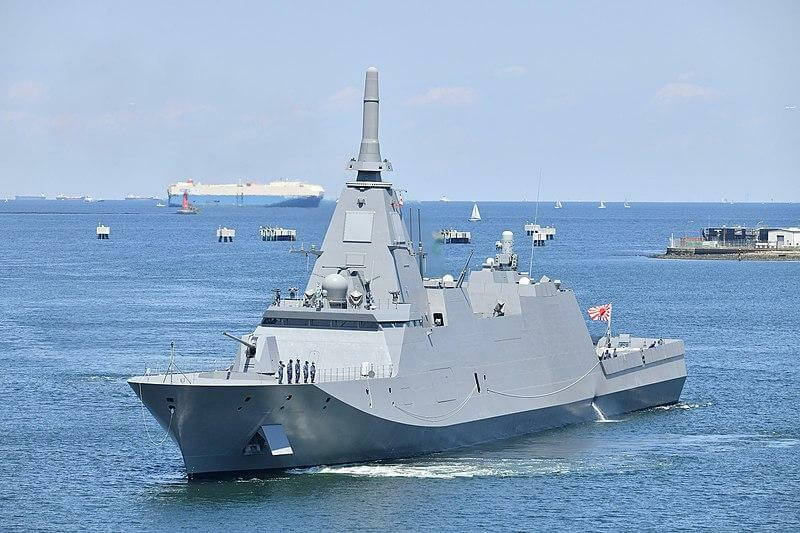
The Ryukyu Islands constitute a critical strategic area situated between Japan and Taiwan. In the event of a conflict involving Taiwan, the primary threat to these islands would be air and missile attacks targeting U.S. and Japanese military installations.
Japan has revised its defence strategy, transitioning from a post-war pacifist orientation, it has enhanced its defence capabilities by acquiring long-range missiles and advanced submarines. The Japan Maritime Self-Defense Force (JMSDF) has introduced Taigei-class submarines equipped with advanced batteries to improve stealth and endurance. Additionally, the Japan Ground Self-Defense Force (JGSDF) has deployed upgraded long-range Type 12 surface-to-ship missiles, capable of reaching up to 1,500 km, to its southern islands. Japan also intends to procure U.S.-manufactured Tomahawk missiles to establish a robust defence system.
Japan faces a distinct challenge from China’s information warfare, which seeks to undermine the Japan-U.S. alliance by inciting anti-base sentiments in Okinawa. These operations disseminate misinformation to portray a weakened alliance and even advocate for Okinawa’s independence from Japan; a notion not grounded in the historical context.
Melanesia, Micronesia, and Polynesia: A New Southern Front
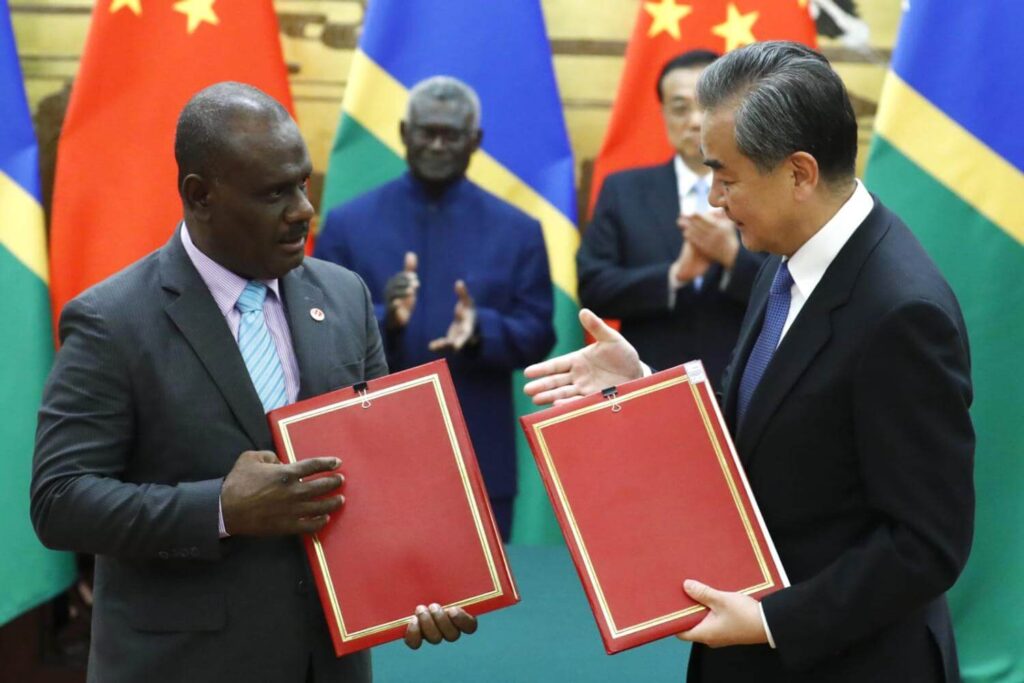
The China-Solomon Islands security pact represents China’s security agreement in the Pacific Islands region. The potential establishment of a Chinese military base in this strategically significant location would profoundly impact the U.S. and its allies.
While a Chinese military base in the South Pacific would be challenging to sustain, the mere prospect prompts the U.S., Australia, and New Zealand to redirect their focus and resources southward. This shift diverts attention from Taiwan and the South China Sea, thereby stretching the resources of the U.S. and its allies and complicating the maintenance of the “First Island Chain” strategy. China leverages security agreements to extend its influence without resorting to force. In response, Australia and its partners have engaged in diplomatic protests and increased developmental assistance to counter China’s influence in the region.
The Aleutian Islands

The Aleutian Islands are strategically important to the northern Pacific. The shortest route between Tokyo and Seattle traverses these islands, which are crucial for U.S. missile defences. China and Russia have intensified their collaboration in this region by conducting joint bomber patrols and naval exercises near Alaska. This cooperation is significant for both nations and presents a new concern for the U.S. The Bering Strait has emerged as a vulnerable point, compelling the U.S. to divide its focus. While the U.S. aims to deter threats in the Indo-Pacific, this emerging northern issue complicates its efforts, indicating that future conflicts may not be confined to a single area but could span the entire Pacific region.
Need for Enhancing Security Capabilities and Infrastructure
Small Pacific Island nations lack the capacity to develop large navies comparable to those of China; therefore, they should prioritise strategies that impede unrestrained Chinese movement within their waters. They must develop security capabilities individually as a nation, collectively as a group of Pacific Island Nations, and cooperatively with the U.S. and allied countries. These capabilities must be envisaged with accompanying security infrastructure, such as ports, dockyards, runways, radar stations, satellite stations, and repair and maintenance facilities for aircraft and unmanned vehicles.

The recommended naval assets and capabilities required for the islands’ defence include:
Offshore Patrol Vessels (OPVs): These are low-cost, multi-role vessels that enable nations to patrol their vast maritime domains and enforce their sovereign rights against grey zone incursions. These are essential for EEZ patrol, fisheries protection against Illegal, Unreported, and Unregulated (IUU) fishing, anti-smuggling, and search and rescue. OPVs should have a range of approximately 3000 nautical miles, speed of approximately 20 knots, accommodation for approximately 20 personnel, and low maintenance costs.
Maritime Domain Awareness (MDA) Systems: To facilitate effective monitoring of extensive Exclusive Economic Zones (EEZs), nations must establish MDA systems that enable local patrol vessels to respond accordingly. This involves the installation of coastal radar systems and the establishment of satellite data agreements with neighbouring countries. Real-time monitoring of maritime activities is essential for identifying illicit activities such as “dark shipping” and illegal, unreported, and unregulated (IUU) fishing. A secure data-sharing infrastructure, commercial satellite radio frequency data, and “common operating picture” frameworks are integral components of this system.
Coastal defence missiles: These systems provide a credible deterrent without necessitating a large and costly surface fleet. A single missile battery can pose a threat to multiple surface vessels, rendering it a high-impact, low-cost asset. Nations can deploy multiple mobile launch units, offering asymmetric deterrence against superior naval forces and enabling area denial at strategic choke points. Land-based mobile launchers with long-range anti-ship capabilities (exceeding 200 km) must be integrated with networked sensors.
Modern Patrol Craft and Unmanned Systems: These assets offer a direct, cost-effective response to harassment by the Chinese Coast Guard and maritime militia, ensuring a persistent presence at critical flashpoints. Deploying several fast boats and rigid hull inflatable boats (RHIBs) at key locations is crucial for countering “grey zone” tactics and conducting littoral operations in contested areas, thereby freeing larger vessels for other missions. These crafts are characterised by high speed, manoeuvrability, robust hulls for operation in contested waters, and the ability to integrate with unmanned surface vessels (USVs).
Maritime Patrol Aircraft: The large exclusive economic zones (EEZ) of Pacific Island nations make it inefficient to patrol with seaborne vessels alone; therefore, Maritime Patrol Aircraft (MPAs) are a cost-effective way to provide surveillance and complement patrol boats. They are effective in combating illegal fishing, a critical issue for the economy and food security of these nations. Furthermore, smaller, specialised, and forward-deployed aircraft are more effective for disruption and can adapt to challenges more easily.
Integrated Air and Missile Defence (IAMD): This system provides a multi-layered defence to protect critical military and civilian infrastructure from air and missile attacks. Continued investment in existing systems is necessary to counter ballistic and hypersonic missile threats, particularly in the event of a Taiwanese contingency.
Long-Range Standoff Missiles: These missiles enable offensive deterrence, complicating an adversary’s ability to launch saturation attacks against islands. The procurement of missiles which enhance counterstrike capabilities, deterring missile attacks by threatening launch platforms and bases “outside of threat zones.” These missiles should have a range of 900–1,500 km and be able to strike both naval and ground targets from mobile launch platforms.
A robust defence strategy requires more than new equipment; it necessitates ongoing training and cooperation with allies. The United States and its allies should continue to support security enhancements, such as regular security patrols, and military training, in the Pacific Islands.
The above analysis indicates that the threats projected by China are multifaceted. Rather than a conventional military invasion, China’s strategy employs economic and diplomatic tactics in the South Pacific to divert attention and form military alliances with Russia in the Arctic to strain U.S. resources. The United States and its allies face a competitor that understands that competition involves influence, resources, and geography, not merely military engagements. Addressing this challenge requires a well-coordinated and unified strategy that emphasises long-term partnerships.
The traditional reactive approach to addressing issues should be supplanted by consistent investment in the Pacific Islands, entailing a commitment to sustained developmental assistance, such as the construction of climate-resilient infrastructure and combating corruption. By presenting a stable alternative to China’s strategy, the United States and its allies can counteract China’s influence and fortify regional governance.
The United States and its allies should persist in providing and training local forces in defence capabilities. Coastal defence missiles, unmanned systems, and enhanced maritime awareness represent effective and cost-efficient tools that serve as deterrents without necessitating parity with China’s numerical strength.
A cohesive front is imperative in this regard, the United States, Japan, Australia, and other partners must synchronise their diplomatic and security measures to counter China’s influence. This includes the development of counter-narratives and fortification of information defences to prevent division among allies and safeguard democratic institutions. Through collaboration, allies can more effectively counter China’s efforts to divide them and their Pacific partners.

